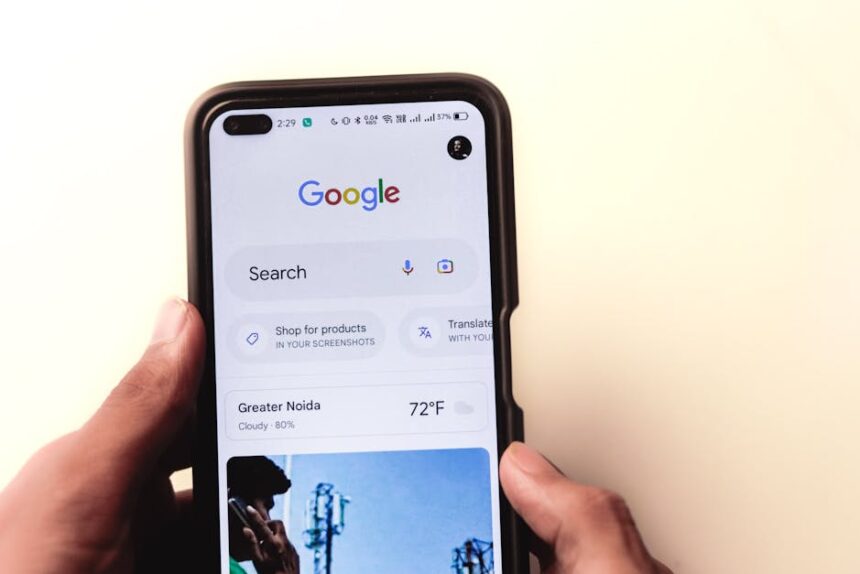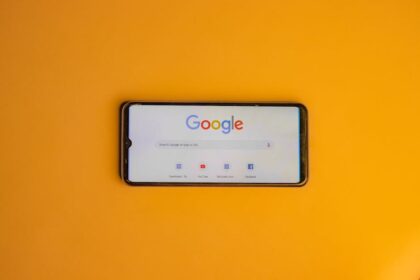Understanding Mobile User Experience (UX) for SEO
Mobile user experience (UX) is no longer a peripheral concern for search engine optimization (SEO); it is a foundational pillar. With the proliferation of smartphones and tablets, the majority of digital interactions now occur on mobile devices. Google, recognizing this seismic shift, has fundamentally re-engineered its indexing and ranking algorithms to prioritize mobile-first experiences. Consequently, a superior mobile UX directly translates into enhanced search visibility, improved engagement metrics, and ultimately, higher conversion rates. This comprehensive exploration delves into the intricate relationship between mobile UX and SEO, outlining best practices, technical considerations, and future trends essential for digital success.
The Indispensable Nexus: Mobile UX and SEO Convergence
Mobile UX encompasses every aspect of a user’s interaction with a website or application via a mobile device. This includes factors such as ease of navigation, loading speed, readability, visual appeal, and overall responsiveness. For SEO, these elements are no longer merely “nice-to-haves”; they are critical ranking signals. Google’s mobile-first indexing, initiated in 2018, means that the search engine primarily uses the mobile version of a website’s content for indexing and ranking. If the mobile experience is subpar, even an impeccably optimized desktop site will struggle to rank.
Furthermore, Google’s introduction of Core Web Vitals as critical ranking signals has solidified mobile UX’s role. These metrics—Largest Contentful Paint (LCP), First Input Delay (FID), and Cumulative Layout Shift (CLS)—directly measure aspects of page load speed, interactivity, and visual stability, all of which are paramount to a positive mobile experience. Sites that excel in these areas are rewarded with higher rankings, while those that falter face demotion in search results. Beyond algorithmic considerations, user behavior reinforces this convergence. Mobile users are notoriously impatient; slow loading times, difficult navigation, or illegible content lead to immediate bounces, eroding engagement and negatively impacting SEO metrics like dwell time and bounce rate.
Pillars of Exemplary Mobile User Experience for SEO
Achieving a high-quality mobile UX requires a multifaceted approach, addressing numerous design and technical considerations. Each element contributes to user satisfaction and, by extension, SEO performance.
1. Responsive Design and Adaptability
Responsive web design is the cornerstone of modern mobile UX. It ensures that a website’s layout and content adapt seamlessly to various screen sizes, orientations, and device types, from the smallest smartphone to large tablets and even foldable devices. This adaptive flexibility eliminates the need for separate mobile and desktop versions, streamlining development and ensuring content parity for search engines.
- Fluid Grids and Flexible Images: Responsive design relies on fluid grid layouts, using relative units (percentages,
em,rem,vw/vh) instead of fixed pixel widths. Images and media are scaled proportionally, preventing overflow and maintaining visual integrity across devices. Themax-width: 100%;CSS rule for images is fundamental. - Media Queries: These CSS techniques allow developers to apply different styles based on device characteristics like screen width, height, resolution, and orientation. For example, a media query can adjust font sizes, column layouts, or hide less critical elements for smaller screens.
- Viewport Configuration: The
tag in the HTMLis crucial. It instructs the browser to set the viewport width to the device’s screen width and to set the initial zoom level to 1, preventing undesirable scaling or horizontal scrolling. - Touch Targets and Spacing: On touch-based devices, elements must be large enough and sufficiently spaced for users to tap accurately with their fingers. Google recommends a minimum tap target size of 48 CSS pixels. Overlapping or closely packed interactive elements lead to frustrating mis-taps and poor UX.
- Horizontal Scrolling Avoidance: Content that extends beyond the viewport horizontally forces users to scroll sideways, a common indicator of a non-responsive or poorly optimized mobile site. This significantly degrades UX and signals to search engines that the site is not mobile-friendly.
2. Lightning-Fast Speed and Performance
Mobile users expect instant gratification. Page load speed is not just a UX enhancement; it’s a direct ranking factor, especially with Core Web Vitals. Slow loading times increase bounce rates and negatively impact conversion funnels.
- Largest Contentful Paint (LCP) Optimization: LCP measures the render time of the largest image or text block visible within the viewport. To improve LCP:
- Image Optimization: Compress images without sacrificing quality (WebP, AVIF formats are excellent). Use
srcsetandsizesattributes to serve appropriately sized images for different viewports. Implement lazy loading for images and videos that are not immediately visible on screen. - Minify CSS, JavaScript, and HTML: Remove unnecessary characters, whitespace, and comments from code files to reduce their size.
- Eliminate Render-Blocking Resources: Defer non-critical CSS and JavaScript to prevent them from blocking the initial page render. Load critical CSS inline.
- Optimize Server Response Time (TTFB): Use a fast hosting provider, optimize database queries, and implement server-side caching.
- Leverage Content Delivery Networks (CDNs): CDNs distribute content closer to users geographically, reducing latency and speeding up delivery.
- Browser Caching: Instruct browsers to cache static assets (images, CSS, JS) so they don’t need to be re-downloaded on subsequent visits.
- Image Optimization: Compress images without sacrificing quality (WebP, AVIF formats are excellent). Use
- First Input Delay (FID) Enhancement: FID measures the time from when a user first interacts with a page (e.g., clicks a button) to when the browser is actually able to respond to that interaction. A high FID often indicates heavy JavaScript execution.
- Break Up Long Tasks: Divide large JavaScript tasks into smaller, asynchronous chunks to prevent them from monopolizing the main thread.
- Optimize Third-Party Scripts: Minimize the impact of analytics, ads, and other external scripts by loading them asynchronously or deferring them.
- Reduce JavaScript Execution Time: Optimize JavaScript code for efficiency and avoid unnecessary computations.
- Cumulative Layout Shift (CLS) Mitigation: CLS quantifies unexpected layout shifts of visual page content. These shifts are incredibly frustrating on mobile, leading to mis-clicks.
- Specify Dimensions for Images and Videos: Always include
widthandheightattributes (or aspect-ratio CSS) for media to reserve space, preventing layout shifts as they load. - Avoid Inserting Content Above Existing Content: Dynamic content injected into the DOM (e.g., ads, cookie banners) should not push existing content downwards after the initial render. Reserve space or load it in a way that doesn’t cause shifts.
- Preload Fonts: Use
font-display: swaporoptionalandpreloaddirectives to prevent Flash of Unstyled Text (FOUT) or Flash of Invisible Text (FOIT), which can cause layout shifts when custom fonts load.
- Specify Dimensions for Images and Videos: Always include
3. Intuitive Navigation and Information Architecture
Mobile screens offer limited real estate, making efficient and clear navigation paramount. Users must be able to find what they’re looking for quickly and easily without excessive scrolling or tapping.
- Thumb-Friendly Design (Thumb Zone): Most mobile users hold their phones with one hand, using their thumb to interact. Critical navigation elements and calls-to-action (CTAs) should be placed within the “thumb zone” (the bottom and center areas of the screen) for easy reach.
- Streamlined Menus:
- Hamburger Menus: While widely recognized, their discoverability can be lower than always-visible navigation. Use them for secondary navigation or complex sites.
- Tab Bars (Bottom Navigation): Ideal for primary navigation with 3-5 key sections, particularly for apps or app-like websites, as they are always visible and within the thumb zone.
- Dropdowns and Accordions: Effective for organizing large amounts of content, allowing users to expand or collapse sections as needed.
- Clear Calls-to-Action (CTAs): Buttons and links must be visually distinct, sufficiently large, and clearly labeled with action-oriented text. Their placement should guide the user effortlessly through the desired conversion path.
- Effective Search Functionality: A prominent, easily accessible search bar is crucial for content-rich sites, allowing users to bypass hierarchical navigation. Implement auto-suggest and relevant filtering options.
- Breadcrumbs: These navigation aids show users their current location within the site hierarchy, enhancing usability and reducing disorientation, especially on larger sites.
- Logical Information Hierarchy: Content should be organized logically, with clear headings (H1, H2, H3, etc.) that structure information. This not only aids readability for users but also signals content relevance and structure to search engines.
4. Optimized Readability and Content Presentation
Content is king, but on mobile, legible content is paramount. Small screens and varying light conditions necessitate careful attention to typography, spacing, and visual elements.
- Legible Font Sizes and Line Heights:
- Body Text: A minimum of 16px (CSS pixels) is generally recommended for body text on mobile to ensure comfortable reading.
- Headings: Headings should be proportionally larger than body text and provide clear visual hierarchy.
- Line Height: Sufficient line height (e.g., 1.5 to 1.8 times the font size) improves readability by providing adequate space between lines of text.
- High Contrast Ratios: Text and background colors must have sufficient contrast to ensure readability for all users, including those with visual impairments. WCAG (Web Content Accessibility Guidelines) recommends specific contrast ratios (e.g., 4.5:1 for normal text, 3:1 for large text).
- Concise Paragraphs and Ample Whitespace: Break long blocks of text into shorter paragraphs (1-3 sentences) to improve scannability. Use ample whitespace around text and elements to reduce cognitive load and make the page feel less cluttered.
- Effective Use of Lists: Bullet points and numbered lists break up text, highlight key information, and improve scannability, which is vital for mobile users who often skim.
- Multimedia Optimization:
- Images: As mentioned, optimize for size and format. Ensure
altattributes are descriptive for accessibility and SEO. - Videos: Embed responsive video players (e.g., Vimeo, YouTube) that adapt to screen size. Optimize video file sizes and use appropriate streaming technologies to prevent buffering. Provide transcripts for accessibility and SEO.
- Audio: Ensure audio players are simple to use on mobile and provide volume controls.
- Images: As mentioned, optimize for size and format. Ensure
- Semantic HTML for Structure: Using appropriate HTML tags (e.g.,
5. Streamlined Form Design and Input Efficiency
Filling out forms on mobile can be cumbersome. Simplifying this process is critical for conversions, from contact forms to e-commerce checkouts.
- Minimized Fields: Only ask for essential information. Eliminate unnecessary fields to reduce cognitive load and input time.
- Clear Labels and Placeholders: Labels should be consistently positioned above or next to input fields. Placeholders can offer hints but shouldn’t replace clear labels.
- Appropriate Keyboard Types: Use
input typeattributes (e.g.,type="email",type="tel",type="number") to automatically bring up the relevant keyboard for the user, speeding up data entry. - Auto-fill and Auto-correct Support: Enable browser auto-fill for common fields (name, address, payment details) and allow auto-correct for text inputs.
- Real-time Validation and Clear Error Messages: Provide immediate feedback on input errors. Error messages should be clear, concise, and indicate exactly what needs to be corrected, rather than vague warnings.
- Progress Indicators for Multi-step Forms: For longer forms, a progress bar or step indicator helps users understand how many steps remain, reducing frustration and abandonment rates.
- Large, Accessible Buttons: Submit buttons and other actionable elements should be prominent and easy to tap.
6. Interactive Elements and Touch Targets
The way users interact with a mobile site through touch gestures requires careful design.
- Adequate Touch Target Size: As previously mentioned, a minimum of 48×48 CSS pixels for interactive elements like buttons and links.
- Sufficient Spacing: Ensure ample padding around touch targets to prevent accidental taps on adjacent elements.
- Visual Feedback on Touch: When a user taps an element, provide immediate visual feedback (e.g., a subtle color change, slight animation) to confirm the interaction was registered.
- Eliminate Hover States: Mobile devices don’t have a “hover” state in the traditional sense. Information or actions revealed on hover for desktop must be presented differently on mobile (e.g., always visible, revealed on tap, or in an accordion).
- Optimized Gesture Support: While basic taps are universal, consider specific gestures (swipe for galleries, pinch-to-zoom for images) where appropriate, but ensure they are intuitive and provide clear visual cues. Avoid custom gestures that are not universally understood.
7. Accessibility on Mobile Devices
Accessibility ensures that users with disabilities can perceive, understand, navigate, and interact with your mobile content. An accessible website is inherently a better UX for all users and a strong positive signal for search engines.
- WCAG Guidelines Adherence: Follow the Web Content Accessibility Guidelines (WCAG) (e.g., 2.1 or 2.2 AA level) as a standard for building inclusive mobile experiences.
- Screen Reader Compatibility: Ensure all meaningful images have descriptive
alttext. Use semantic HTML (e.g.,
,) correctly. Provide ARIA (Accessible Rich Internet Applications) roles and attributes where standard HTML elements are insufficient to convey meaning or state to screen readers (e.g.,aria-label,aria-expanded). - Keyboard Navigation: While mobile primarily uses touch, some users may rely on external keyboards or assistive technologies. Ensure all interactive elements are reachable and operable via keyboard tabbing.
- Color Contrast: Maintain high contrast ratios for text and interactive elements to assist users with low vision or color blindness. Avoid conveying information solely through color.
- Legible Text and Resizing: Allow users to resize text without breaking the layout. Ensure text doesn’t flow horizontally when magnified.
- Descriptive Link Text: Avoid generic “click here” or “read more.” Link text should clearly describe its destination.
- Captions and Transcripts for Media: Provide captions for videos and transcripts for audio content to benefit users who are deaf or hard of hearing, or those who prefer to consume content in text format.
Technical SEO Considerations for Mobile UX
The technical underpinnings of a mobile-friendly site are directly tied to its SEO performance. These are not merely suggestions but often prerequisites for successful indexing and ranking.
1. Mobile-First Indexing: The Definitive Shift
Google’s mobile-first indexing means the crawler primarily examines the mobile version of your site to understand its content and determine its rankings. This makes it non-negotiable to have a robust, content-rich, and fast mobile site.
- Content Parity: Ensure the mobile version of your site contains all the valuable content present on the desktop version. Hidden content (e.g., accordions that don’t expand by default) might be devalued if not properly implemented and crawlable.
- Structured Data Implementation: Schema markup must be present on the mobile version of the page if it’s relevant to the content. Structured data helps Google understand context and generate rich snippets, which enhance visibility on mobile SERPs.
- Meta Tags and Canonicalization: Ensure meta titles, descriptions, and canonical tags are consistent and correctly implemented on the mobile version. For responsive design, the same URL is used for both desktop and mobile, simplifying canonicalization. For separate mobile URLs (m.dot sites), correct
rel="alternate"andrel="canonical"tags are critical. - Robots.txt and XML Sitemaps: Verify that your
robots.txtfile does not block Googlebot’s access to critical mobile CSS, JavaScript, or images. Ensure your XML sitemap correctly points to your mobile URLs (if separate) or the responsive URLs.
2. Core Web Vitals (LCP, FID, CLS): Direct Ranking Signals
As discussed, these metrics are central to Google’s page experience signals. Optimizing for them is a direct SEO activity.
- Measuring and Monitoring: Regularly use Google Search Console’s Core Web Vitals report, PageSpeed Insights, Lighthouse, and WebPageTest to measure and identify specific opportunities for improvement.
- Iterative Optimization: Performance optimization is an ongoing process. Small, continuous improvements can lead to significant gains.
3. Progressive Web Apps (PWAs): Elevating Mobile Experiences
PWAs combine the best aspects of web and native app experiences, offering reliability, speed, and engagement. While not a direct ranking factor, their inherent UX benefits translate into SEO advantages.
- Offline Capability: Service Workers enable PWAs to function offline or on low-quality networks, greatly enhancing reliability and user retention.
- App-like Interactions: Features like push notifications, home screen icons, and full-screen mode provide an immersive, app-like experience.
- Speed: PWAs are designed for speed, often pre-caching assets, leading to near-instantaneous loading times after the initial visit. This directly impacts LCP and FID.
- Discoverability: PWAs are indexed by search engines like traditional websites, unlike native apps that require app store optimization.
- Engagement: Push notifications and a persistent presence on the home screen can significantly boost re-engagement and dwell time.
4. Accelerated Mobile Pages (AMP): A Specialized Solution
AMP is an open-source framework designed to create lightning-fast mobile pages. While its prominence has somewhat shifted with Core Web Vitals, it remains relevant for specific use cases, particularly news and content publishers.
- Strict HTML/CSS/JS Rules: AMP pages adhere to a strict set of rules, forcing developers to build highly performant pages.
- Google Cache Delivery: AMP pages are often served from Google’s AMP Cache, delivering content almost instantly.
- Carousel in SERP: Historically, AMP pages were featured in a prominent carousel for news articles. While this placement isn’t guaranteed, AMP still indicates a highly performant page.
- Considerations: Implementing AMP adds maintenance overhead (separate AMP version of pages) and limits design flexibility. For many sites, a well-optimized responsive design provides equivalent or superior UX and SEO benefits without the AMP framework’s constraints.
5. HTTPS Security for Mobile Trust
HTTPS is a ranking signal and a fundamental trust factor, especially on mobile, where users are often on public Wi-Fi networks. All mobile sites should be served over HTTPS. Google actively flags non-HTTPS sites as “not secure” in Chrome, deterring users.
Content Strategy Tailored for Mobile UX and SEO
Content needs to be crafted with the mobile user in mind from conception, not just adapted later.
- Conciseness and Clarity: Mobile users have shorter attention spans and less screen real estate. Get straight to the point. Use clear, simple language.
- Scannability: Employ short paragraphs, bullet points, numbered lists, bold text, and effective use of headings and subheadings to break up content. This allows users to quickly scan for key information.
- Visual Content Integration: Use high-quality, optimized images, infographics, and short videos to break up text and convey information visually. Ensure images have descriptive
alttext. - Micro-copy: Small pieces of text like button labels, error messages, and form instructions should be extremely clear, concise, and helpful.
- Local SEO Considerations: For businesses with physical locations, mobile users are often looking for immediate information like directions, opening hours, or contact numbers. Optimize for local search by ensuring Name, Address, Phone (NAP) consistency, embedding Google Maps, and optimizing Google My Business profiles.
- Call-to-Value, Not Just Call-to-Action: Beyond telling users what to do (e.g., “Buy Now”), convey the benefit of taking that action (e.g., “Get 20% Off Your First Order”).
Tools and Metrics for Mobile UX and SEO Analysis
Regularly monitoring and analyzing mobile UX and SEO performance is crucial for continuous improvement.
- Google Search Console (GSC):
- Mobile Usability Report: Identifies pages with common mobile usability issues (e.g., small font size, cramped tap targets, viewport not set).
- Core Web Vitals Report: Provides site-wide performance data for LCP, FID, and CLS, categorized as Good, Needs Improvement, or Poor.
- URL Inspection Tool: Allows real-time testing of how Googlebot sees a specific URL, including its mobile-friendliness.
- Google PageSpeed Insights: Provides a performance score (0-100) for both mobile and desktop, along with field data (from CrUX) and lab data (Lighthouse). Offers actionable recommendations for improvement.
- Lighthouse: An open-source, automated tool for improving the quality of web pages. It audits performance, accessibility, best practices, SEO, and PWA readiness. Can be run directly from Chrome DevTools.
- Google’s Mobile-Friendly Test: A quick tool to check if a specific page is considered “mobile-friendly” by Google.
- Google Analytics (GA4):
- User Flow Reports: Analyze how users navigate your mobile site, identifying drop-off points.
- Device Category Reports: Understand the distribution of mobile, tablet, and desktop users.
- Engagement Metrics: Monitor bounce rate, dwell time, pages per session, and conversion rates specifically for mobile users.
- Site Speed Reports: Provides data on various loading performance metrics.
- Third-Party Performance Tools:
- GTmetrix: Provides detailed performance reports, waterfall charts, and optimization recommendations.
- WebPageTest: Offers highly configurable tests from various locations and devices, showing detailed load sequences and render times.
- User Behavior Analytics Tools (Heatmaps, Session Recordings):
- Hotjar, Crazy Egg, FullStory: These tools visualize user behavior (clicks, scrolls, taps) on mobile devices through heatmaps and session recordings, revealing usability issues not apparent through quantitative data alone.
- A/B Testing Tools:
- Google Optimize (deprecated but principles remain), Optimizely, VWO: Allow you to test different mobile UX variations (e.g., different CTA placements, form layouts) to see which performs best for specific goals.
Implementing Mobile UX Best Practices: A Strategic Process
Optimizing for mobile UX is an ongoing journey that should be integrated into the entire development lifecycle.
1. Comprehensive Mobile UX Audit:
- Begin by conducting a thorough audit of your current mobile website using tools like Google Search Console, PageSpeed Insights, and manual testing on various devices.
- Identify critical issues related to speed, responsiveness, navigation, readability, and form usability.
- Benchmark against competitors.
2. User Research and Usability Testing:
- Surveys and Interviews: Gather qualitative feedback from your target audience regarding their mobile experiences, pain points, and preferences.
- Usability Testing: Observe real users interacting with your mobile site. This can reveal unexpected challenges and provide invaluable insights into user behavior. Consider remote unmoderated testing or in-person moderated sessions.
- Persona Development: Create detailed mobile user personas to guide design decisions.
3. Mobile-First Design and Development:
- Adopt a “mobile-first” approach from the outset. This means designing and building the mobile experience before scaling up to desktop. This forces a focus on essential content and efficient layouts.
- Prioritize content. What is absolutely necessary on a small screen?
- Sketch, wireframe, and prototype mobile layouts before coding.
4. Development and Technical Optimization:
- Implement responsive design techniques, focusing on fluid grids, flexible images, and media queries.
- Rigorously optimize for speed: compress images, minify code, leverage caching, and ensure efficient server response times.
- Ensure all interactive elements meet touch target guidelines.
- Implement structured data relevant to your mobile content.
- Verify correct
robots.txtand sitemap configurations for mobile.
5. Rigorous Testing Across Devices:
- Test your mobile site on a wide range of actual devices and browsers (iOS, Android, Chrome, Safari, Firefox). Emulators are useful but cannot fully replicate real-world conditions.
- Test different network conditions (3G, 4G, 5G) to understand performance variability.
- Conduct accessibility testing using screen readers and keyboard navigation.
6. Continuous Monitoring and Iteration:
- Mobile UX and SEO are not one-time projects. Continuously monitor Core Web Vitals, mobile usability reports in GSC, and user behavior analytics.
- Stay updated with Google’s algorithm changes and mobile design best practices.
- Regularly iterate on your design and technical implementations based on data and user feedback. A/B test significant changes.
Future Trends in Mobile UX for SEO
The mobile landscape is constantly evolving. Staying ahead of emerging trends will be key to maintaining a competitive edge in SEO.
- Voice Search Optimization: As voice assistants (Google Assistant, Siri, Alexa) become ubiquitous, optimizing content for conversational queries (long-tail keywords, natural language) is crucial. Mobile users are more likely to use voice search. Featured snippets and rich results become even more vital here.
- Augmented Reality (AR) in Mobile UX: AR experiences, facilitated by smartphone cameras, are becoming more common in retail (e.g., “try before you buy”), gaming, and educational contexts. Integrating AR thoughtfully can provide highly engaging and unique mobile UX, leading to increased dwell time and potential for unique content ranking.
- AI-Driven Personalization: AI can analyze user behavior on mobile to deliver hyper-personalized content, product recommendations, and navigation paths. This tailoring enhances user satisfaction, boosts engagement, and can improve conversion rates, indirectly benefiting SEO.
- Foldable Devices and Flexible UIs: The rise of foldable smartphones introduces new screen states and aspect ratios. Mobile UX designers will need to account for seamless transitions between folded and unfolded modes, ensuring content flows naturally and interactive elements remain accessible.
- 5G Impact on Speed and Immersive Experiences: Widespread 5G adoption will dramatically increase mobile network speeds and reduce latency. This will enable richer, more complex mobile experiences, including high-definition video streaming, real-time interactive applications, and more robust AR/VR content, pushing the boundaries of what’s possible in mobile UX. Sites that leverage these capabilities effectively will gain an advantage.
- Immersive Web Experiences (WebXR): The convergence of AR and VR on the web, facilitated by WebXR APIs, allows for truly immersive experiences directly in the browser on mobile devices. While nascent for widespread SEO impact, sites that pioneer accessible and valuable WebXR content could establish unique authority.
- Dark Mode Optimization: Many mobile users prefer dark mode for eye comfort and battery saving. Offering a well-implemented dark mode option enhances UX and signals attention to user preferences.
- Biometric Authentication: Integration of fingerprint or facial recognition for secure logins and transactions streamlines the mobile user journey, reducing friction and enhancing security perception.
Mobile user experience is intrinsically linked to SEO success. Google’s algorithmic shifts and the evolving landscape of user behavior on mobile devices demand a holistic approach where design, performance, and content are optimized specifically for the handheld screen. By prioritizing responsiveness, speed, intuitive navigation, accessibility, and a content strategy tailored for mobile, businesses can not only meet but exceed user expectations, resulting in higher rankings, increased organic traffic, and ultimately, greater digital prosperity.











